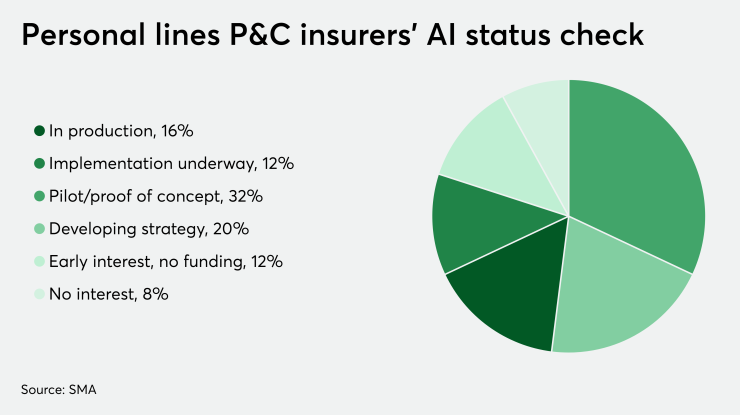Technologies in the artificial intelligence family have great potential in insurance, according to a recent SMA survey of P&C insurance executives. This should come as no surprise to anyone following the developments in machine learning, natural language processing, computer visioning, chatbots, virtual assistants, and other related technologies. After a long and varied history of AI technologies (including the lengthy AI winter), we are now on the verge of the golden age of AI. At least that’s the storyline most have bought into. But in the context of the insurance industry, is the potential of AI overhyped? Or, despite all the enthusiasm, it is the ultimate impact even underestimated?
To answer those questions, it is necessary to further examine the technologies and their possible uses. There is not one easy way to express the potential of AI for P&C. And much of the actualization depends on the time frame. It is important to recognize the many different technologies that comprise the AI family. Insurers see the highest potential in machine learning, robotic process automation (RPA), and technologies to analyze unstructured data (natural language processing, data mining). RPA implementations, in particular, are taking off like rockets in the industry. Insurers of all sizes are already leveraging the technology to automate routine tasks. Many projects are also underway using machine learning to assess risk and identify fraud (among other things). So, value is already being delivered, and insurers are moving forward with AI-related projects for specific technologies.

Several factors are driving the interest and activity in AI. First, insurance is a process and data-intensive industry. Massive amounts of both structured and unstructured data are captured, routed, organized, and analyzed. The industry has just scratched the surface on the traditional data, and new data sourced from sensors and connected devices is added to that. The possibilities to automate for efficiency and analyze for insight are tremendous. Second, insurance is a people-intensive industry. For most lines, experts are required to sell insurance, assess risk, handle claims, and manage operations. Many of the seasoned experts in various disciplines are expected to retire over the next five to 10 years. This creates a compelling need to automate low-level tasks and augment human expertise for more complex tasks so that the potentially smaller and less experienced workforce can continue to propel the industry forward.
Yes, there is a lot of hype about how AI will transform the industry. It is also true that much of the potential transformation may still be a few years away as the power of AI technologies slowly ripples across the industry. But the convergence of industry factors, the rapid progress of the technologies, and the experienced gained by other industries in their AI deployments mean that AI is likely to have a transformative impact on insurance over time. So, it’s safe to assume that the potential of AI technologies is overhyped for the near term but underestimated for the long term.
This blog has been reposted with permission





